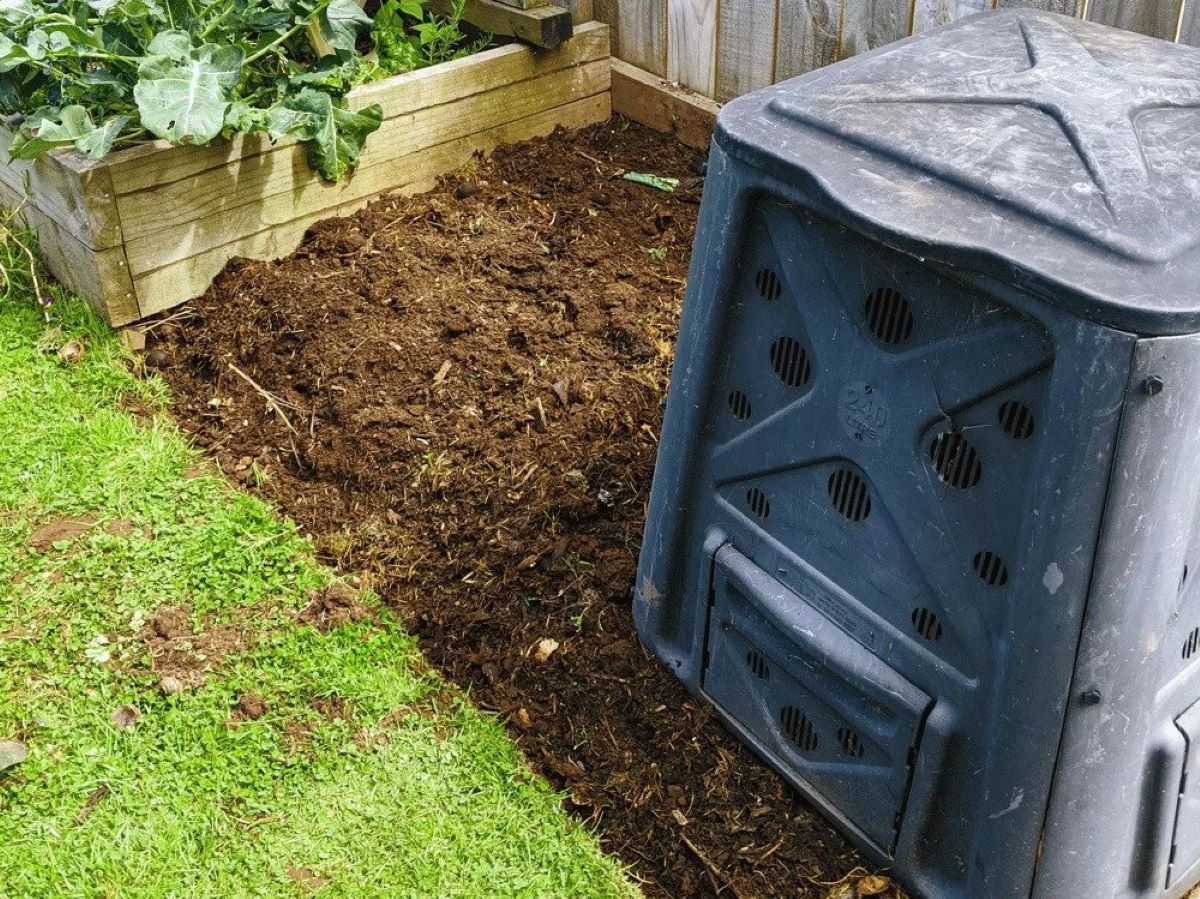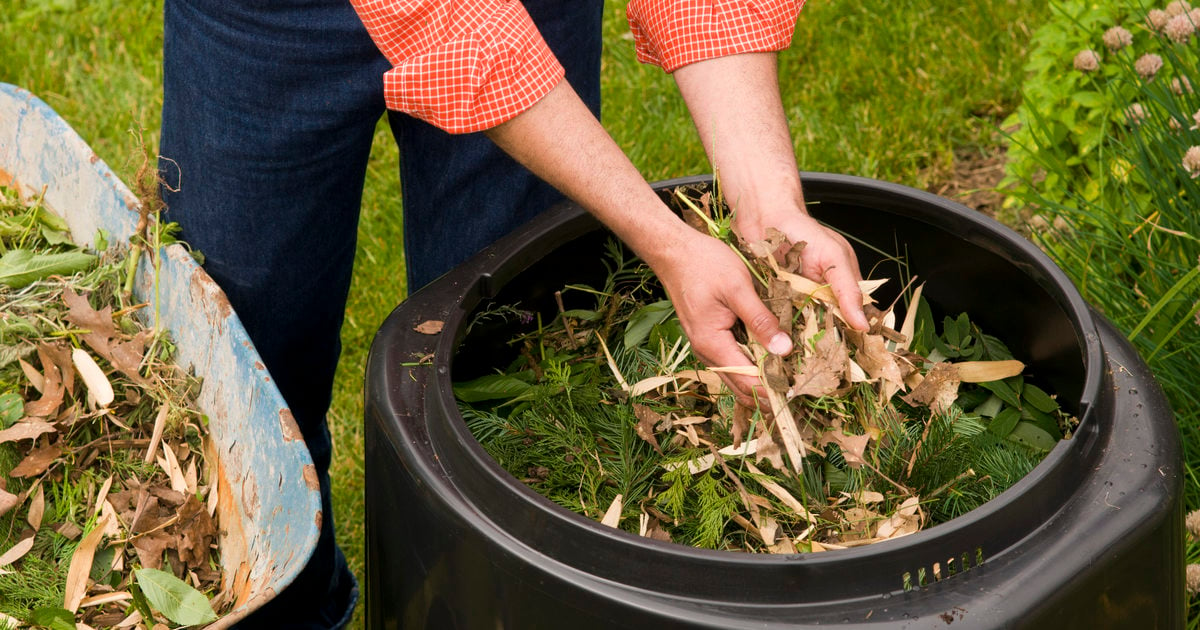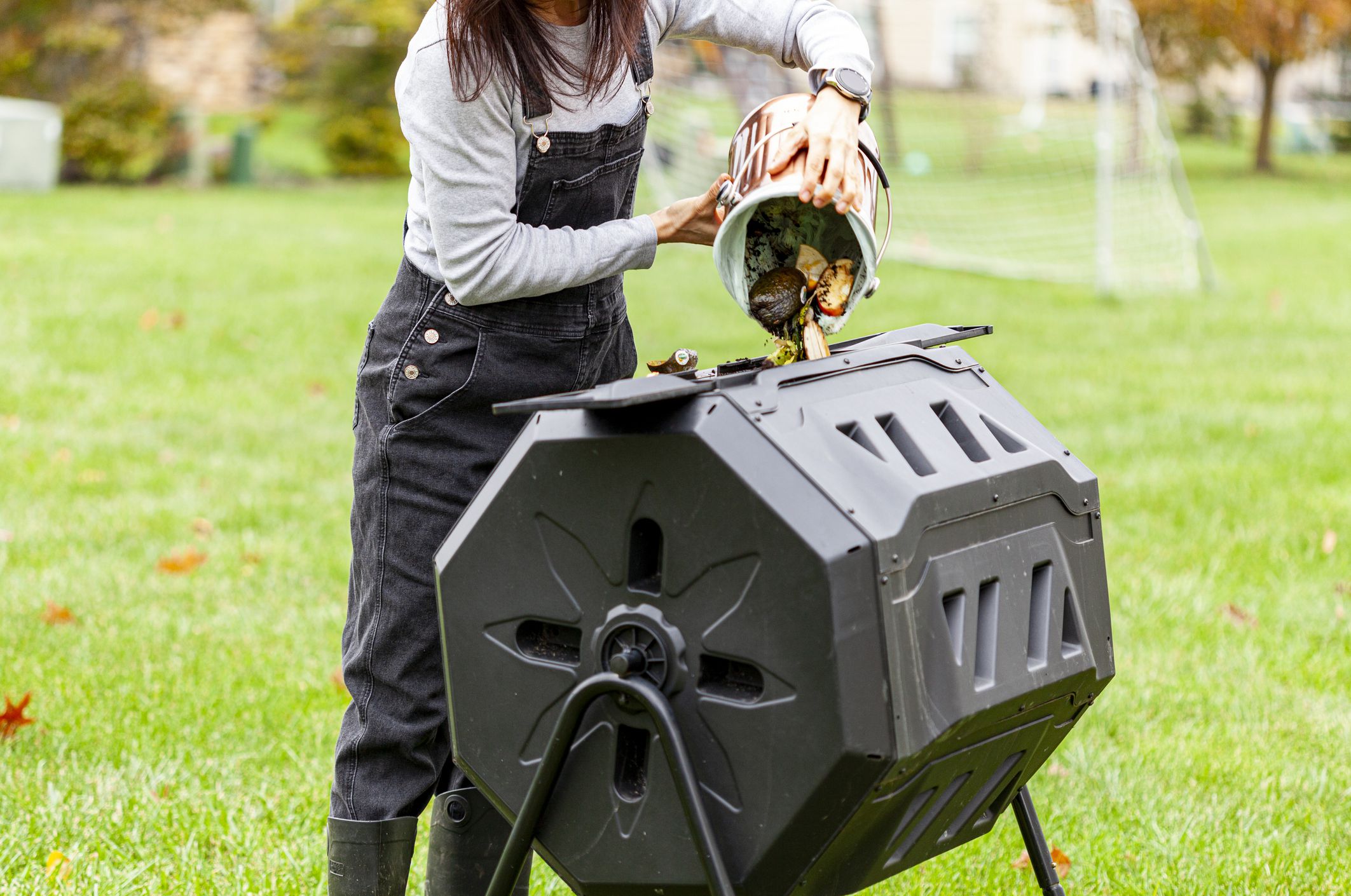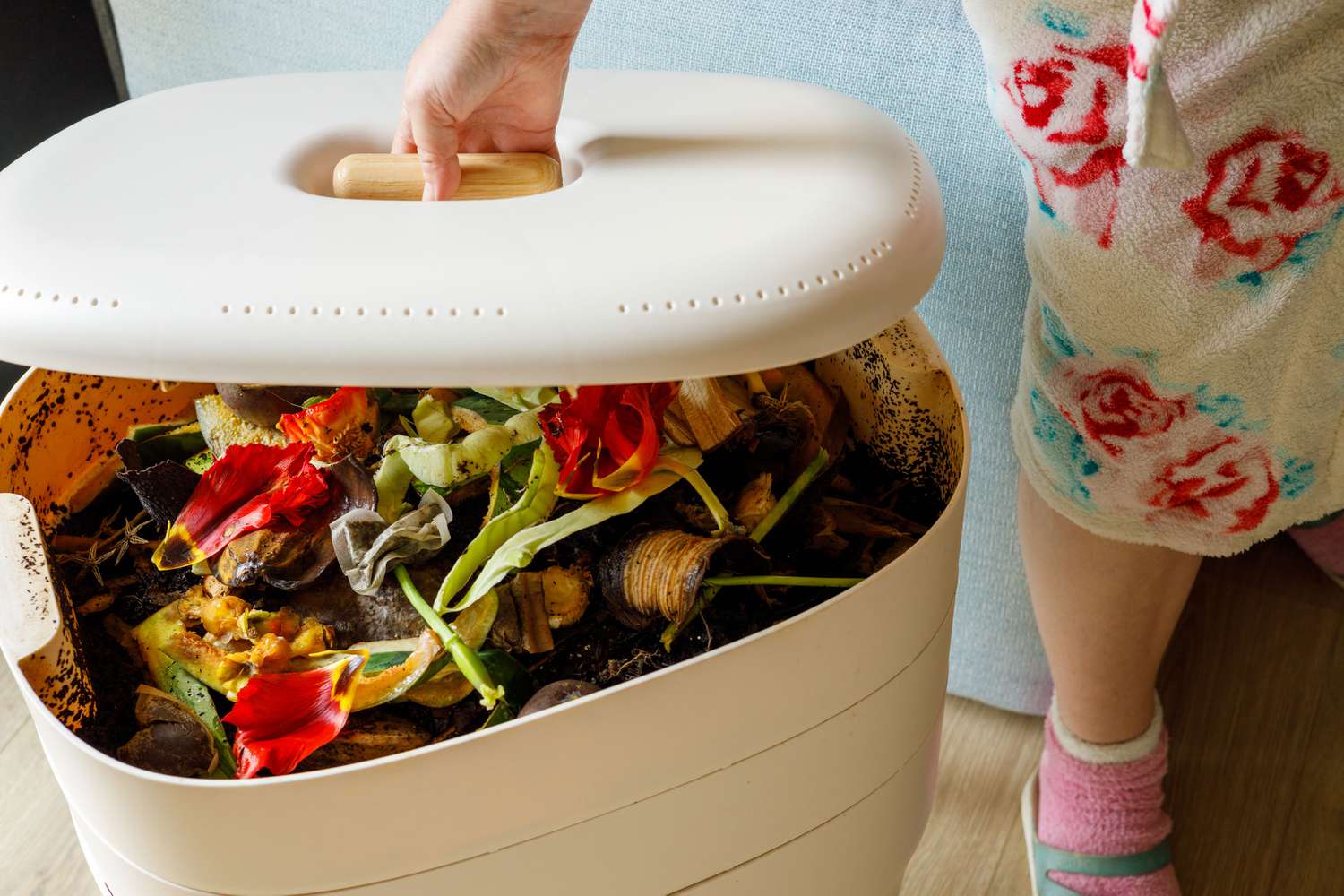Home>Gardening Basics>What Is The Ultimate Goal Of A Compost Bin?
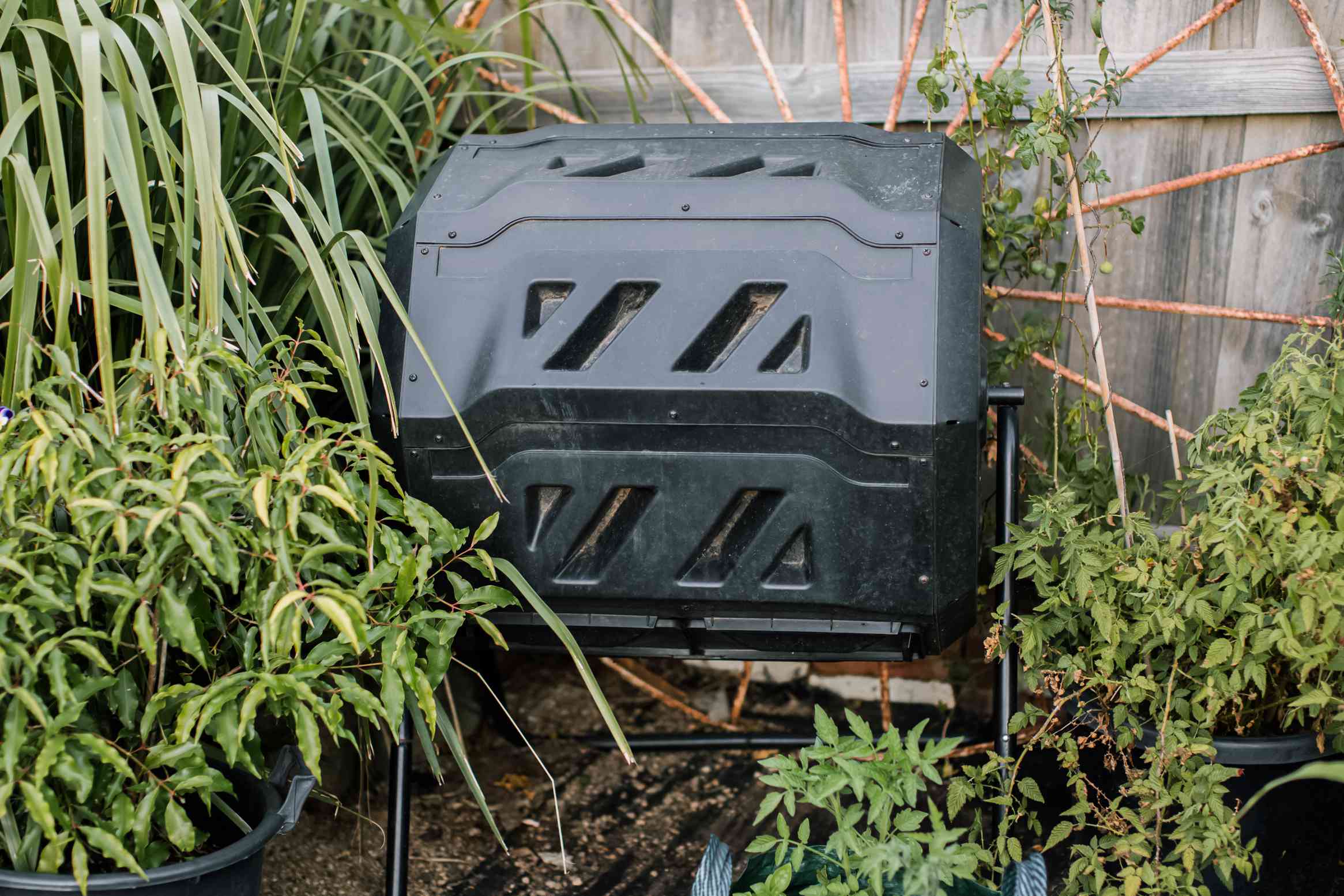

Gardening Basics
What Is The Ultimate Goal Of A Compost Bin?
Modified: January 22, 2024
Discover the ultimate goal of a compost bin and how to get started. Learn the benefits of composting and how it promotes sustainable gardening.
(Many of the links in this article redirect to a specific reviewed product. Your purchase of these products through affiliate links helps to generate commission for Chicagolandgardening.com, at no extra cost. Learn more)
Table of Contents
- Introduction
- Benefits of Composting
- What Is a Compost Bin?
- The Importance of a Compost Bin
- Factors to Consider When Choosing a Compost Bin
- How to Set Up a Compost Bin
- Maintaining and Caring for a Compost Bin
- Turning Compost in a Bin
- Harvesting and Using Compost from a Bin
- Common Mistakes to Avoid with a Compost Bin
- Conclusion
Introduction
Welcome to the world of composting! If you’re looking for a sustainable and eco-friendly way to manage your organic waste and improve your garden’s soil quality, then a compost bin is your answer. Composting is the process of decomposing organic materials, such as kitchen scraps, yard waste, and leaves, into nutrient-rich humus that can be used to enrich the soil in your garden or potted plants.
Composting not only helps reduce the amount of waste that goes to landfills but also provides numerous environmental and gardening benefits. By composting at home, you can contribute to the reduction of greenhouse gas emissions, conserve water, and decrease your reliance on chemical fertilizers.
In this article, we will explore the ultimate goal of a compost bin, the benefits it offers, and how to properly set up and maintain one. Whether you’re a seasoned gardener or just getting started, understanding the importance of a compost bin and how to maximize its potential will help you create nutrient-rich compost that will nourish your plants and promote a thriving garden ecosystem.
Benefits of Composting
Composting offers a wide range of benefits for both the environment and your garden. Here are some of the key advantages:
- Reduced Waste: Composting allows you to divert organic waste from landfills, reducing the amount of waste that sits in landfill sites and produces harmful greenhouse gases.
- Nutrient-Rich Soil: The compost produced from a compost bin is a nutrient-rich, dark, and crumbly substance that can significantly improve the quality of your soil. It enriches the soil by adding essential nutrients and microorganisms, helping to create healthy and vibrant plants.
- Improved Soil Structure: Compost improves the soil structure by increasing its ability to hold water, improving drainage, and preventing erosion. By enhancing the soil’s structure, you create a better environment for plant roots to thrive.
- Water Conservation: Compost increases the soil’s water-holding capacity, reducing the need for frequent watering. It helps retain moisture in the soil, especially in sandy or clay soils, which tend to drain quickly.
- Reduced Chemical Dependency: By using compost, you can lessen your reliance on chemical fertilizers and pesticides, which can be harmful to the environment and human health. Compost provides a natural and sustainable alternative that nourishes plants without the use of synthetic chemicals.
- Biodiversity: Composting encourages the growth of beneficial microorganisms and earthworms that contribute to a healthy and diverse garden ecosystem. These organisms break down organic matter and release nutrients in the soil, fostering a thriving environment for plants.
- Cost Savings: Making your own compost can save you money on commercial fertilizers and soil conditioners. Additionally, by reducing waste and using compost as a soil amendment, you may see a decrease in your garbage collection fees.
By reaping the benefits of composting, you not only contribute to a greener environment but also enjoy more productive and sustainable gardening. With a compost bin, you have the opportunity to turn your kitchen and garden waste into a valuable resource that supports the health and vitality of your plants.
What Is a Compost Bin?
A compost bin is a designated container or structure designed to facilitate the decomposition of organic materials into nutrient-rich compost. It acts as a controlled environment where the natural process of composting can take place efficiently, providing the optimal conditions for the breakdown of organic matter.
Compost bins come in various shapes, sizes, and materials to suit different preferences and space constraints. Some common types of compost bins include:
- Traditional Compost Bins: These are simple, open-bottomed containers made from materials such as wood, wire mesh, or recycled plastic. They allow for proper aeration and drainage.
- Tumbling Compost Bins: These bins have a rotating or tumbling mechanism that helps in mixing and turning the compost. They are ideal for those who want to speed up the composting process.
- Vermicomposting Bins: Vermicomposting bins use worms to break down organic waste. They typically consist of stacked trays or bins, allowing worms to move freely between them.
- DIY Compost Bins: You can also create your own compost bin using materials like wooden pallets, cinder blocks, or repurposed containers. DIY compost bins offer flexibility and customization options.
Regardless of the type of compost bin you choose, the main goal remains the same – to provide the proper conditions for the decomposition of organic materials. These conditions include:
- Airflow: Good aeration is essential for the decomposition process. Compost bins should have adequate airflow to allow oxygen to reach the microorganisms responsible for breaking down the organic matter.
- Moisture: The material in the compost bin should be damp, similar to a wrung-out sponge. It should not be too wet or too dry, as both extremes can hinder the decomposition process.
- Proper Carbon-Nitrogen Ratio: The ideal compost pile contains a balance of carbon-rich materials (such as dried leaves or straw) and nitrogen-rich materials (such as vegetable scraps or grass clippings). This balance helps maintain the microbial activity necessary for decomposition.
- Temperature: Composting generates heat as microorganisms break down organic matter. The ideal temperature range for composting is between 120 to 160 degrees Fahrenheit (49 to 71 degrees Celsius). This temperature supports the growth of beneficial microorganisms and accelerates the decomposition process.
With a compost bin, you can harness the power of nature to transform your organic waste into a valuable resource. Let’s explore how to set up and maintain a compost bin to ensure its success in the next section.
The Importance of a Compost Bin
A compost bin plays a crucial role in sustainable waste management and organic gardening. Here are some reasons why a compost bin is important:
- Reduces Waste: By utilizing a compost bin, you can divert a significant portion of your organic waste from ending up in landfills. This helps reduce the environmental impact associated with waste disposal and landfill emissions.
- Creates Nutrient-Rich Soil: The compost produced in a bin is a highly valuable soil amendment. It is rich in organic matter, microorganisms, and essential nutrients that contribute to healthy plant growth. The nutrient-rich compost helps improve soil structure, fertility, and overall plant health.
- Enriches Soil Microbiology: Composting fosters the growth of beneficial microorganisms, such as bacteria and fungi, in the soil. These microorganisms break down organic matter, release essential nutrients, and enhance the soil’s ability to retain moisture, creating a thriving and balanced ecosystem for plants.
- Reduces Water Usage: Compost improves the water-holding capacity of soil, reducing the frequency of irrigation needed. By increasing water retention, compost reduces water runoff and promotes deeper root growth, thus conserving water resources.
- Promotes Sustainable Gardening: Compost supplies plants with natural and slow-release nutrients, minimizing the need for synthetic fertilizers. By reducing chemical dependency and promoting organic practices, a compost bin supports sustainable gardening and protects the environment from the potentially harmful effects of chemical runoff.
- Encourages Biodiversity: Compost bins create an environment that supports beneficial organisms like earthworms and beneficial insects. These creatures help break down organic matter, increase nutrient availability, and improve soil health. This biodiversity promotes a well-balanced ecosystem and reduces the need for harmful pesticides.
- Reduces Carbon Footprint: Composting significantly reduces greenhouse gas emissions. When organic waste breaks down in landfills without proper air circulation, it produces methane, a potent greenhouse gas. By composting at home, you contribute to reducing methane emissions and combating climate change.
By recognizing the importance of a compost bin, you can actively contribute to a healthier environment, conserve resources, and create a sustainable garden. In the next sections, we will guide you through choosing the right compost bin, setting it up, and maintaining it effectively.
Factors to Consider When Choosing a Compost Bin
Choosing the right compost bin is essential to ensure successful composting. Here are some factors to consider when selecting a compost bin:
- Bin Size: Consider the amount of organic waste you generate and the available space in your garden or yard. Smaller bins are suitable for households with limited space, while larger bins are ideal for those with more significant amounts of waste.
- Materials: Compost bins can be made from various materials such as wood, plastic, or metal. Each material has its own advantages and considerations. Wood bins provide insulation and aesthetics but may require more maintenance. Plastic bins are affordable, lightweight, and low-maintenance. Metal bins are durable but may be prone to heat retention.
- Aeration and Drainage: Ensure that the chosen compost bin has adequate ventilation to allow for airflow. Good airflow is crucial for the composting process as it helps maintain the right moisture levels and facilitates the breakdown of organic matter. Look for bins with ventilation holes or design features that promote proper aeration and drainage.
- Access and Portability: Consider how easy it is to access the compost inside the bin. Bins with removable or hinged lids, access doors, or tumbling mechanisms make it convenient to add and remove compost. If you plan to move the bin regularly, consider options with wheels or lightweight designs.
- Pest and Rodent Control: Choose a compost bin that offers protection against pests and rodents. Bins with tight-fitting lids, secure closures, or built-in pest barriers can help prevent unwanted critters from getting into your compost pile.
- Odor Control: Look for compost bins with features that minimize odors. Bins with proper ventilation and covers help control odor by allowing for airflow and reducing excessive moisture.
- Cost: Consider your budget when selecting a compost bin. Prices can vary depending on the size, materials, and additional features of the bin. Determine how much you are willing to spend and choose a bin that fits your budget while meeting your composting needs.
By considering these factors, you can select a compost bin that aligns with your specific requirements and ensures efficient and effective composting. The right compost bin will be a valuable investment in sustainable waste management and gardening practices.
How to Set Up a Compost Bin
Setting up a compost bin properly is crucial for successful composting. Follow these steps to ensure a well-functioning composting system:
- Choose the Right Location: Select a location for your compost bin that is convenient, accessible, and provides the optimal conditions for composting. Ideally, the spot should be well-drained, receive some sunlight, and be easily accessible for adding materials and turning the compost.
- Prepare the Base: Start by clearing the ground where the compost bin will sit. Remove any grass, weeds, or debris. If desired, lay down a layer of straw or twigs as a base to improve drainage and aeration.
- Add a Layer of Brown Material: Begin the compost pile by adding a layer of brown materials like dried leaves, straw, or shredded newspaper. This layer helps create airflow and provides carbon-rich material for the decomposition process.
- Add a Layer of Green Material: Next, add a layer of green materials such as vegetable scraps, fruit peels, or fresh grass clippings. This layer provides nitrogen-rich material that balances the carbon-to-nitrogen ratio and activates the decomposition process.
- Continue Layering: Alternate layers of brown and green materials, maintaining a ratio of about 3 parts brown to 1 part green. This layering helps create a well-balanced compost pile, ensuring proper decomposition and preventing odors.
- Moisten the Pile: After each layer, lightly moisten the compost pile with water. The pile should be damp but not soggy. Proper moisture levels are essential for microorganisms to thrive and break down the organic matter.
- Continue Adding Materials: As you generate organic waste, continue adding it to the compost bin. Remember to maintain a balance between brown and green materials to ensure proper decomposition.
- Turn the Compost: Every 1-2 weeks, use a pitchfork or compost aerator to turn the compost pile. Turning the compost helps aerate it, mixes the materials, and accelerates the decomposition process. This step is optional for compost bins with tumbling mechanisms.
- Maintain Moisture and Aeration: Check the compost pile regularly to ensure it remains moist. If it appears too dry, lightly water it. If it’s too wet and compacted, add more dry brown materials to improve aeration. Proper moisture and aeration are vital for efficient composting.
- Wait for the Compost to Mature: Depending on the materials used and the composting conditions, the composting process can take several months to a year. Patience is key. Monitor the compost pile and wait until it reaches a dark, crumbly, and earthy texture, indicating that it is fully decomposed and ready to use.
By following these steps, you can effectively set up a compost bin and lay the foundation for nutrient-rich compost production. In the next section, we’ll explore how to maintain and care for your compost bin to ensure optimal composting conditions.
Maintaining and Caring for a Compost Bin
Maintaining and caring for your compost bin is essential to ensure efficient decomposition and successful composting. Here are some tips to keep your compost bin healthy and productive:
- Add Regularly: Continuously add organic waste to your compost bin to maintain an active composting process. Remember to layer brown and green materials to maintain a balanced carbon-to-nitrogen ratio.
- Maintain Moisture: Regularly monitor the moisture levels in your compost bin. The compost pile should remain consistently moist, like a damp sponge. If it gets too dry, lightly water it. If it becomes too wet, add dry browns to improve drainage and aeration.
- Aerate the Compost: Turning or aerating the compost pile every 1-2 weeks helps introduce oxygen, mix the materials, and encourage decomposition. This step accelerates the composting process and helps prevent odors.
- Manage Temperature: Composting generates heat, so monitor the temperature of your compost pile regularly. The ideal temperature range for efficient composting is between 120 to 160 degrees Fahrenheit (49 to 71 degrees Celsius). If the pile gets too hot, turn it to regulate the temperature.
- Add Amendments: Occasionally, you may need to add amendments to your compost pile to correct any imbalances. For example, if the compost is too acidic, add agricultural lime. If it’s too alkaline, add powdered sulfur. Consult a soil testing kit for accurate measurements.
- Manage Odors: Properly maintained compost bins should not produce foul odors. If you notice unpleasant smells, it may be a sign of improper airflow and excess moisture. Add dry browns and ensure proper aeration to control odors.
- Protect from Pests: Use a secure lid or cover for your compost bin to prevent pests and rodents from accessing the compost pile. Avoid adding meat, dairy, or oily foods that can attract animals.
- Monitor Composting Time: The duration of the composting process can vary depending on various factors, including the materials used, temperature, and aeration. Monitor the composting time and be patient as the organic matter transforms into nutrient-rich compost.
- Harvest and Use Compost: Once the compost has reached a dark, crumbly texture and has a pleasant earthy smell, it’s ready to be harvested and used in your garden. Harvest the mature compost by removing the finished compost from the bottom of the pile and use it to enrich your soil or potting mix.
- Repeat the Cycle: After harvesting your compost, start the process again by adding new organic waste to the compost bin. This cycle ensures a continuous supply of nutrient-rich compost for your garden.
By following these maintenance and care guidelines, you can maintain a healthy and thriving compost bin. Proper management not only increases the efficiency and effectiveness of composting but also helps create high-quality compost to nourish your plants.
Turning Compost in a Bin
Turning or aerating your compost pile is an important practice to maintain optimal conditions for decomposition. Turning the compost helps introduce oxygen, mix the materials, and speed up the breakdown of organic matter. Here’s how to turn compost in a bin:
- Choose the Right Time: The frequency of turning compost depends on various factors such as the size of your compost bin, the materials used, and the temperature. As a general guideline, aim to turn the compost every 1-2 weeks.
- Gather the Necessary Tools: Prepare a pitchfork or compost aerator to aid in turning the compost. These tools help break up any compacted areas and mix the materials effectively.
- Empty the Compost Bin: If your compost bin has removable sections or trays, empty the contents onto a tarp or a designated area next to the bin. If it’s a one-piece bin, use the pitchfork or aerator to lift and turn the compost inside the bin.
- Mix the Materials: Break up any clumps or compacted areas in the compost pile. Move the compost from the outer edges towards the center of the pile. Mix the brown and green materials to ensure an even distribution and promote balanced decomposition.
- Moisten if Necessary: As you turn the compost, assess its moisture levels. If it feels too dry, lightly moisten it with water. The compost should be consistently damp, similar to a wrung-out sponge.
- Rebuild the Compost Pile: After turning and mixing the compost, rebuild the pile in the bin. Layer the compost back into the bin, alternating brown and green materials as you go. Ensure proper aeration by loosely layering the materials.
- Monitor and Maintain: After turning the compost, monitor its moisture levels, temperature, and overall progress. Continue regular composting practices, such as adding organic waste, maintaining moisture, and optimal carbon-to-nitrogen ratio.
Turning the compost in your bin helps facilitate the decomposition process and ensures consistent airflow and moisture distribution. Regular turning promotes faster breakdown of organic matter and results in well-aerated, nutrient-rich compost. Remember, turning frequency may vary depending on your specific composting conditions, so adjust as needed.
Harvesting and Using Compost from a Bin
Harvesting the compost from your bin is an exciting step in the composting process. Once the organic matter has fully decomposed into nutrient-rich compost, it’s ready to be used in your garden. Here’s how to harvest and use compost from a bin:
- Monitor Maturity: Over time, the compost in your bin will transform into a dark, crumbly texture with an earthy smell. This indicates that it has matured and is ready for harvesting. The composting process can take several months to a year, depending on various factors.
- Stop Adding New Materials: About two to four weeks before you plan to harvest the compost, stop adding new organic waste to the bin. This allows the remaining materials to decompose fully and ensures that you obtain a uniform, finished product.
- Empty the Compost Bin: Empty the compost bin onto a tarp or directly onto your garden bed. If your bin has removable sections or trays, it can be easier to remove and empty them individually. Use a rake or shovel to carefully transfer the compost out of the bin.
- Sift or Screen (Optional): If you prefer a finer texture for your compost, you can sift or screen it to remove any remaining large particles or undecomposed material. This step is optional but can result in a more uniform and consistent compost texture.
- Apply to the Garden: Once your compost has been harvested, it’s time to apply it to your garden. Spread a layer of compost over your flower beds, vegetable gardens, or potted plants. Use a garden fork or a spade to gently work the compost into the soil for optimal nutrient absorption.
- Topdressing and Mulching: Compost can also be used as a topdressing or mulch. Apply a thin layer of compost around the base of your plants to provide a slow-release source of nutrients. Mulching with compost helps retain moisture, suppress weed growth, and insulate plant roots.
- Compost Tea: Another way to utilize compost is by making compost tea. Simply steep a handful of compost in a bucket of water for a few days, then strain the liquid. Dilute the compost tea with water and use it to water your plants for an additional boost of nutrients.
By harvesting and using the compost from your bin, you ensure that your efforts in composting are put to good use. The nutrient-rich compost will improve soil fertility, enhance plant growth, and contribute to a healthier and more productive garden.
Common Mistakes to Avoid with a Compost Bin
Composting is a simple and rewarding process, but it’s important to avoid certain common mistakes that can hinder the effectiveness of your compost bin. By steering clear of these errors, you can ensure a successful composting experience. Here are some common mistakes to avoid:
- Adding Non-Compostable Materials: It’s crucial to only add organic materials that are compostable. Avoid adding meat, dairy, oily foods, or pet waste, as these can attract pests and slow down the decomposition process. Stick to plant-based materials such as fruit and vegetable scraps, coffee grounds, leaves, and yard waste.
- Imbalanced Carbon-to-Nitrogen Ratio: Maintaining the proper carbon-to-nitrogen ratio is essential for effective composting. Adding too much green material (high in nitrogen) without enough brown material (high in carbon) can result in a smelly, slimy pile. Aim for a balance of about 3 parts brown material to 1 part green material.
- Failure to Turn or Aerate: Neglecting to turn or aerate the compost pile regularly can slow down the decomposition process. Proper aeration helps introduce oxygen, maintains optimal moisture levels, and prevents a compacted pile. Remember to turn the compost every 1-2 weeks or as needed.
- Not Monitoring Moisture Levels: Compost needs to stay consistently moist but not overly wet. Too much moisture can cause a foul smell and hinder the breakdown of materials. Conversely, if the pile is too dry, decomposition slows down. Regularly monitor and adjust moisture levels as necessary to maintain ideal conditions.
- Adding Weed Seeds or Diseased Plants: Be cautious when adding weeds or diseased plants to your compost bin. If not properly composted, weed seeds can survive and germinate in your garden. Diseased plants may also harbor pathogens that can spread to healthy plants. Consider hot composting or avoid adding these materials to prevent future problems.
- Ignoring Pest Control: Pests such as insects, rats, or raccoons may be attracted to the smell of food waste in your compost bin. To deter pests, make sure your bin has a secure lid or cover. Avoid adding meat, dairy, or oily foods that can attract animals. If necessary, use a pest barrier or consider hot composting to discourage pests.
- Adding Too Much or Too Little Activators: Activators, such as finished compost, garden soil, or compost accelerators, can help kick-start the composting process by introducing beneficial microorganisms. However, adding too much or too little activators can disrupt the delicate balance of the compost pile. Follow the recommended guidelines for activator usage.
- Not Patience: Composting is a natural process that takes time. It’s important to be patient and allow the organic materials to decompose fully. Rushing the process or harvesting unfinished compost can result in an ineffective and potentially smelly product. Trust the process and let nature do its work.
By avoiding these common mistakes, you can ensure a smooth and efficient composting journey. Properly managing your compost bin will help you create nutrient-rich compost and contribute to a healthier garden ecosystem.
Conclusion
Composting with a bin is a fantastic way to reduce waste, improve soil health, and promote sustainable gardening practices. By understanding the ultimate goal of a compost bin and following best practices, you can create nutrient-rich compost that nourishes your plants and contributes to a healthier environment.
We explored the numerous benefits of composting, including waste reduction, improved soil structure, water conservation, reduced chemical dependency, and enhanced biodiversity. Compost bins provide the ideal environment for organic materials to decompose, allowing you to harness nature’s power to create a valuable resource.
We discussed the factors to consider when choosing a compost bin, such as size, materials, aeration, and pest control. Proper setup and maintenance are crucial in creating the right conditions for efficient composting. Turning the compost, monitoring moisture levels, and managing a balanced carbon-to-nitrogen ratio are essential practices to ensure success.
Harvesting the matured compost and utilizing it in your garden completes the composting cycle. The rich humus-like substance will support plant growth, improve soil fertility, and reduce the need for chemical fertilizers. Remember to be patient throughout the process, as composting takes time.
By avoiding common mistakes like adding non-compostable materials, neglecting to turn the compost, or ignoring pest control, you can maintain a healthy compost bin and achieve optimal results.
So, whether you’re an experienced gardener or just starting out, harness the power of composting in a bin and make a positive impact on the environment. Embrace the rich tradition of returning organic matter back to the Earth and create thriving, sustainable gardens with the help of a compost bin.




